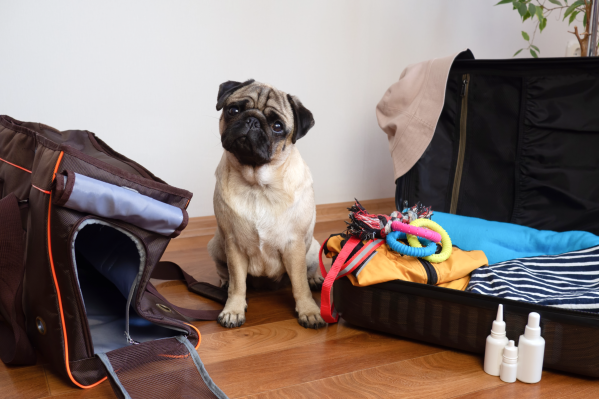You'll take your dog to the vet when they get an unexpected illness, but would you know how to care for your pet if there was an unexpected weather emergency?
Depending on where you live, you may already have a plan, but with ever-changing climate conditions and extreme temperatures shaking things up, you never know when your town could be faced with a weather disaster.
Your pet is part of the family, so you should have emergency plans set in place for how to care for them in the best way possible if the moment strikes. You don’t have to have multiple kits for different weather disasters; it can be simple to create a kit for any emergency that might arise.
Here’s what you need to know about building an emergency preparedness kit for your pet so you can grab it and go if you ever need to. Yui Shapard, BVM&S, MRCVS, and medical director at Pawp shares everything you need to include in your kit to keep your pet protected.
How to prepare for a weather disaster
Dr. Shapard recommends looking at the guidelines from the Humane Society of the U.S. (HSUS) to know what to put in an emergency kit. First, make sure your kit is secure in a waterproof container. You wouldn’t want an unexpected flood or rain to ruin the contents of your to-go bag. Here’s what you should include in the kit:
Pet food - Dr. Shapard says you should have three days to a week’s worth of food and water for your pet. “Use flip-top canned food or include a can opener,” Dr. Shapard suggests. Make sure to replace the food regularly and be on top of expiration dates.
Medications/Health Records - You should also have three days to a week’s worth of your pet’s current medications. Keep copies of their vet records on-hand as well, in addition to contact info for your vet. “If your pet has medication that must be kept cool, keep the medication in one of the sealable plastic bags and ice it with ice from the Red Cross,” says Dr. Shapard.
Current photo of your pet - Place the photos in a sealable plastic bag to protect them. This is in case you need to ID your pet.
Pet carrier - The HSUS recommends to have a pet carrier available for each one of your pets in case you have to transport them in a hurry.
Litter pan and litter for cats
Paper towels/towels/pee pads
Extra leash and collar with identification
You should also have a first aid kit for your pet in your “go” bag. You can combine your first aid kit with your pet's. In general a first aid kit should include:
Gauze pads, adhesive tape
Cotton balls, swabs
3% Hydrogen peroxide, alcohol wipes
Ice pack and disposable gloves
Scissors with blunt end, tweezers
OTC antibiotic ointment
Oral syringe or turkey baster
Dishwashing detergent for bathing
Small flashlight
Artificial tear gel
Have a plan
Make sure you and other members of your household are on the same page, know the plan, and what to do in the event of an emergency. Know where you'll travel if there’s ever a necessary evacuation and make sure to have a plan for transporting your pet.
Of course, emergency situations are unlikely, but when you’re a pet parent and you’re responsible for more than just yourself, you should always be prepared to care for your pet in any situation that arises.
